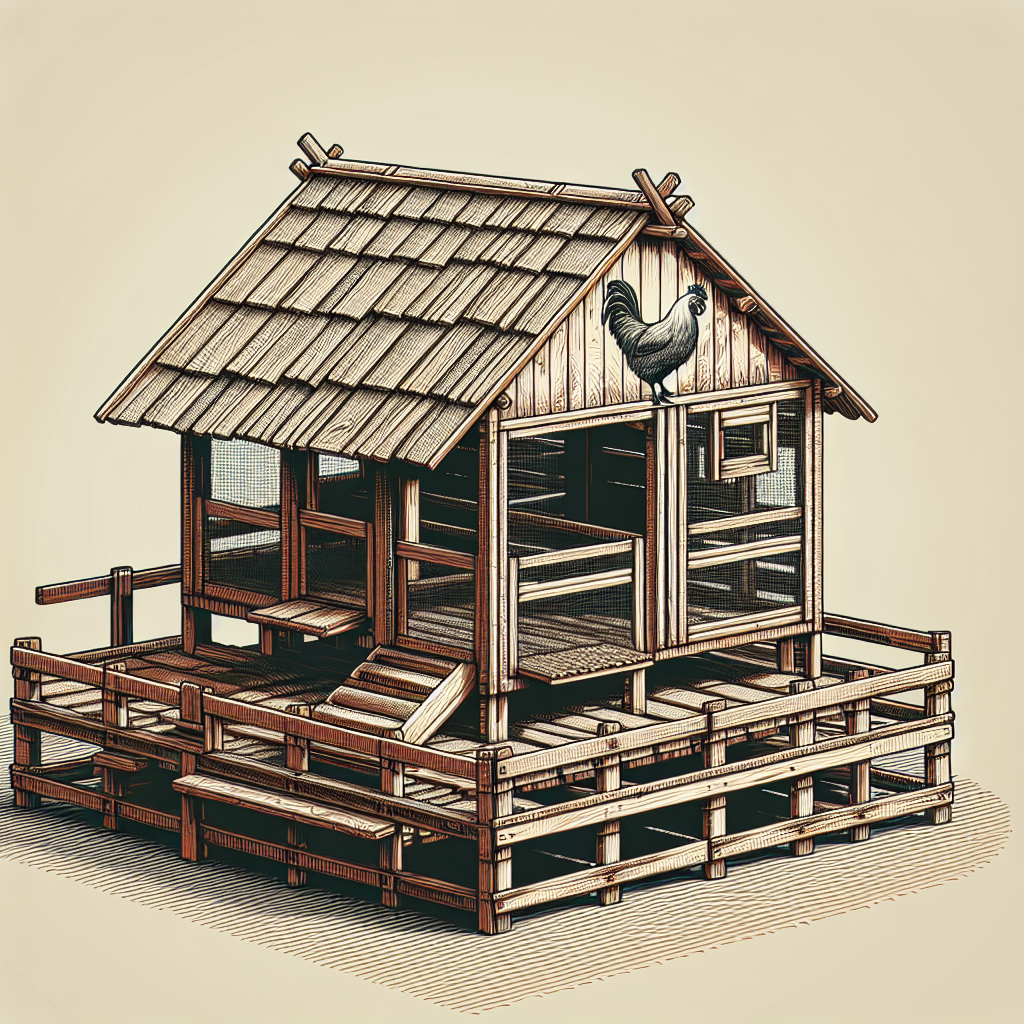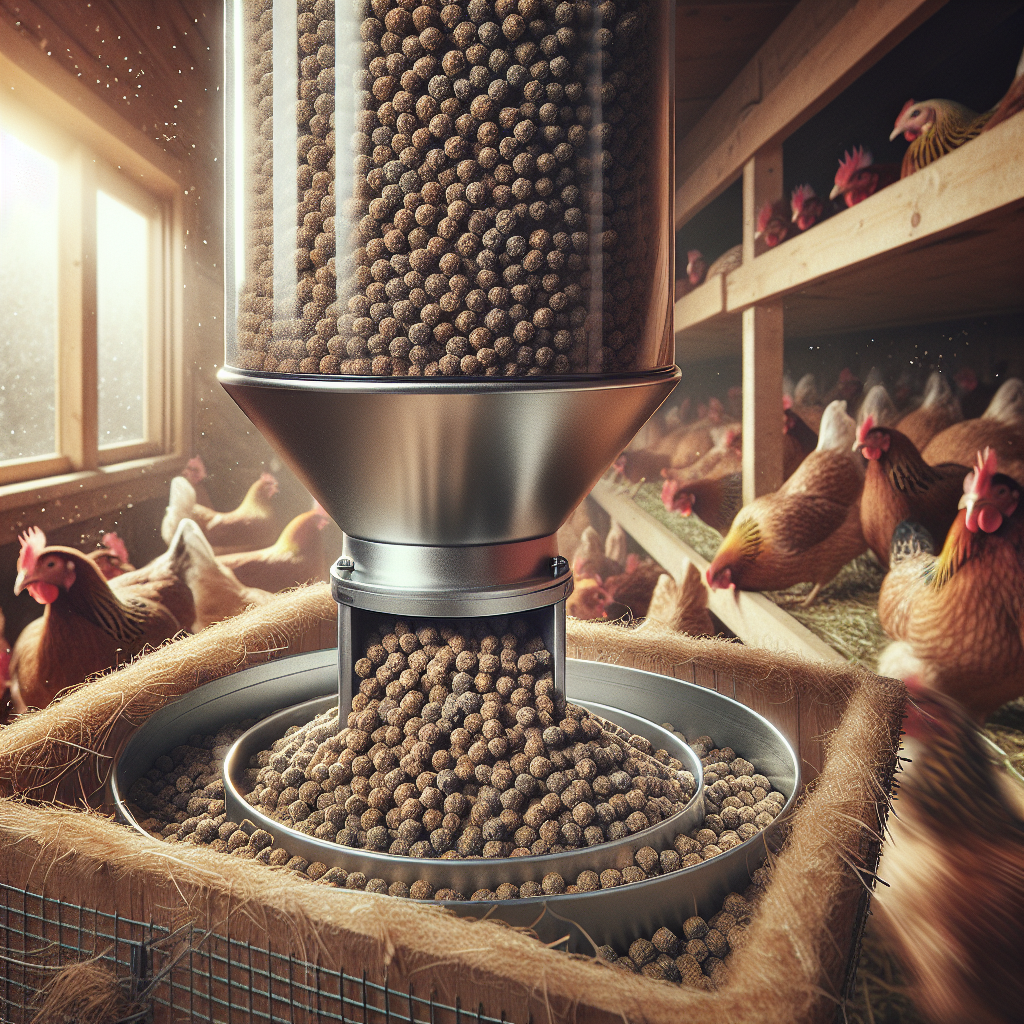Are you curious about the differences in coop designs between free-range and confined poultry setups? If so, you’re in the right place! In this article, we’ll take a closer look at how coop designs can vary depending on whether your chickens are free to roam around or confined to a smaller space. From the size and layout of the coop to the types of materials used, we’ll explore how these factors can impact the overall comfort and well-being of your feathered friends. So, whether you’re a seasoned chicken keeper or just starting out, read on to discover the fascinating world of coop designs for free-range and confined poultry setups.
Coop designs for free-range setups
If you’re considering raising chickens in a free-range setup, it’s essential to have a coop that meets their needs and provides a safe and comfortable environment. Here are a few coop design options that work well for free-range setups:
1. Hut-style coops
Hut-style coops are a popular choice for free-range setups because they provide a simple and effective housing solution for chickens. These coops are small, sturdy structures that offer protection from predators while allowing chickens the freedom to roam and forage. The key considerations when designing a hut-style coop include:
1. Size and space considerations
When it comes to the size of a hut-style coop, it’s crucial to provide enough space for your chickens to move around comfortably. The general rule of thumb is to allow at least 4 square feet of coop space per bird. Additionally, the coop should be tall enough for chickens to stand upright and spread their wings without any restrictions.
2. Nesting boxes and roosting poles
Nesting boxes are essential for hens to lay their eggs comfortably. You should provide at least one nesting box for every four to six hens. Additionally, roosting poles should be included in the coop design to give chickens a place to perch and rest. The poles should be at least 2 inches in diameter to ensure a comfortable grip for the birds.
3. Ventilation and natural lighting
Proper ventilation is crucial in coop designs to ensure good air quality and prevent the buildup of moisture and odors. Hut-style coops should have windows or vents that can be opened and closed to allow for adequate airflow. Natural lighting is also important, as it helps regulate the chickens’ internal clocks and can improve their overall health and egg production.
4. Accessibility for cleaning and egg collection
Designing a hut-style coop that is easy to clean is essential for maintaining a healthy environment for your chickens. Consider including features such as removable nest boxes and easy-to-access doors for cleaning. Additionally, having a designated area for egg collection will make it more convenient for you to gather fresh eggs daily.
2. Portable chicken tractors
Another popular coop design option for free-range setups is the portable chicken tractor. These mobile coops can be easily moved around your property, allowing your chickens to graze on fresh grass and forage for insects. Here are some considerations when designing a portable chicken tractor:
1. Mobility and rotational grazing
One of the key advantages of a portable chicken tractor is that it allows you to practice rotational grazing. By moving the coop to different areas of your property regularly, you can ensure that your chickens have access to fresh grass and insects while preventing overgrazing in one area. Design your chicken tractor with sturdy wheels or skids to make it easy to move.
2. Enclosed shelter and open-air runs
A portable chicken tractor should provide a secure and enclosed shelter for your chickens to roost and lay their eggs. This shelter should be designed to protect the birds from predators and adverse weather conditions. Consider using wire mesh or solid walls to provide security while allowing for adequate ventilation. Additionally, the coop should have an open-air run attached to it to allow for free-range foraging.
3. Protection from predators and adverse weather conditions
When designing a portable chicken tractor, it’s essential to incorporate features that provide protection from predators and adverse weather conditions. Ensure that the coop is securely built with sturdy materials, such as wire mesh or solid walls, to keep out predators like raccoons, foxes, and birds of prey. Additionally, consider adding a waterproof roof or a tarp to provide shelter during inclement weather.
3. Perimeter fencing
Perimeter fencing is an essential component of free-range setups as it provides a boundary for your chickens and helps protect them from predators. When designing your perimeter fencing, consider the following factors:
1. Height and material considerations
The height and material of your perimeter fencing are critical aspects to consider. The fence should be tall enough, at least 6 feet high, to deter predators from jumping over. Additionally, choose a durable material such as wooden posts or metal wire fencing that can withstand the elements and the attempts of predators to break through.
2. Security against predators and potential escape routes
The primary purpose of perimeter fencing is to protect your chickens from predators. Ensure that the fencing is securely installed and does not have any gaps or weak points that predators can exploit. Additionally, consider adding an apron of wire mesh buried underground to prevent predators from digging underneath the fence.
3. Easy access for caretakers and protection from unwanted visitors
Design your perimeter fencing with convenient access points for caretakers to enter and exit the free-range area easily. Include sturdy gates that can be securely locked to prevent unauthorized access. Additionally, consider adding a top net or wire mesh to prevent unwanted visitors, such as birds or rodents, from entering the free-range area.
4. Roosting options
Roosting is a natural behavior for chickens, and providing suitable roosting options in your coop design is essential for their well-being. Consider the following when designing roosting options:
1. Multi-level roosting bars
Chickens prefer to roost at different heights, so providing multi-level roosting bars ensures that they have options to choose from. Design the roosting bars with different heights and widths to accommodate chickens of various sizes comfortably. Additionally, make sure the bars are smooth and wide enough for the chickens to grip without difficulty.
2. Roosting boxes or platforms
Some chickens prefer to roost in enclosed spaces. Include roosting boxes or platforms in your coop design to meet these preferences. These boxes or platforms should be well-ventilated and spacious enough for chickens to comfortably perch and rest.
3. Natural branches as perches
Another option for roosting is to use natural branches as perches. Natural branches provide a more natural and stimulating roosting experience for chickens. Ensure that the branches are thick enough to support the weight of the birds and securely anchored in the coop to prevent them from falling.
5. Vegetation and foraging areas
Chickens thrive when they have access to vegetation and foraging areas in free-range setups. Designing your coop to incorporate these elements will create a more natural and enriching environment for your flock. Consider the following when designing vegetation and foraging areas:
1. Size and diversity of the area
The size and diversity of the vegetation and foraging area should be based on the number of chickens you have and their foraging needs. Aim for a spacious area that allows chickens to roam and explore comfortably. Include a mix of grass, herbs, shrubs, and trees to provide a variety of foraging options.
2. Integration with coop design
When designing the coop and vegetation area, ensure that they are seamlessly integrated. The coop should have easy access points to the vegetation area, whether through a door or a ramp. Additionally, consider incorporating chicken-friendly plants and shrubs around the coop to provide shade and additional foraging opportunities.
3. Protection against overgrazing and potential hazards
It’s important to plan and manage the vegetation area carefully to prevent overgrazing and the depletion of resources. Rotational grazing, discussed earlier in the portable chicken tractor section, can help prevent overgrazing by allowing the vegetation area to recover. Additionally, make sure the area is free from potential hazards such as toxic plants or sharp objects that could harm the chickens.
Now that we’ve covered coop designs for free-range setups, let’s explore coop designs for confined setups.
Coop designs for confined setups
In confined setups, it’s important to provide adequate housing and enrichment options to ensure the health and well-being of your chickens. Here are a few coop design options that work well for confined setups:
1. Enclosed housing units
Enclosed housing units are commonly used in confined setups to provide a secure and protected environment for chickens. Here are some considerations when designing an enclosed housing unit:
1. Size and capacity
The size of the enclosed housing unit should be based on the number of chickens you have and their size. As a general guideline, you should provide at least 4 square feet of floor space per bird. Additionally, consider the height of the enclosure to allow chickens to stand upright and move freely.
2. Flooring materials and bedding options
Choosing the right flooring materials and bedding options is important for maintaining cleanliness and hygiene in the enclosed housing unit. Consider using materials such as concrete, plywood, or linoleum for the flooring, as they are easy to clean and disinfect. For bedding options, straw, wood shavings, or sand can be used to provide comfort and absorb moisture.
3. Separation for roosting, nesting, and feeding areas
In an enclosed housing unit, it’s essential to separate the roosting, nesting, and feeding areas to prevent competition and ensure a stress-free environment for the chickens. Design the coop with designated areas for each of these activities. Nesting boxes should be secluded and offer privacy for hens to lay their eggs comfortably.
4. Ease of cleaning and maintenance
Cleaning and maintaining an enclosed housing unit should be convenient and straightforward. Design the coop with features like removable roosting bars, deep litter boxes, or sliding floors to simplify cleaning. Easy access to all areas of the coop is vital to ensure thorough cleaning and inspection.
2. Wire mesh or solid walls
When designing a coop for confined setups, the choice between wire mesh or solid walls depends on various factors such as security, ventilation, and privacy. Consider the following when deciding between wire mesh or solid walls:
1. Security against predators and pests
Both wire mesh and solid walls offer different levels of security against predators and pests. Wire mesh provides better visibility and ventilation while keeping out larger predators like raccoons or dogs. Solid walls, on the other hand, offer protection against smaller pests like rats or mice. Consider the specific predators or pests in your area when making this decision.
2. Light and air circulation
Wire mesh allows for better air circulation and natural lighting, which can contribute to the overall well-being of your chickens. Solid walls, however, provide more insulation and can help regulate temperature better in different seasons. Balancing these factors is important when considering the type of walls for your coop.
3. Privacy and reducing stress
Chickens benefit from having a sense of privacy and security, which can be provided by solid walls. Solid walls can also help reduce stress by minimizing visibility to outside disturbances. If your chickens are easily stressed or easily distracted, solid walls may be a better choice for your coop.
4. Noise control and neighborhood considerations
If you live in an area where noise control or proximity to neighbors is a concern, solid walls can help reduce noise, such as crowing in the early mornings. Consider the impact that noise may have on your neighbors and choose the appropriate wall type accordingly.
3. Enrichment and perching options
Even in confined setups, it’s important to provide enrichment and perching options to prevent boredom and promote natural behaviors. Consider the following when incorporating enrichment and perching options in your coop design:
1. Hanging or suspended toys and treats
Hanging or suspended toys and treats can provide mental stimulation and entertainment for your chickens. Consider installing hooks or ropes from the ceiling of the coop to hang toys, treats, or even cabbages that chickens can peck at. These toys and treats can help reduce boredom and encourage natural foraging behaviors.
2. Vertical and horizontal perching structures
Perches are essential for chickens to rest and sleep comfortably. In confined setups, consider incorporating vertical and horizontal perching structures to provide variety and accommodate chickens of different sizes. Design the perches with widths of at least 2 inches to ensure a comfortable grip for the birds.
3. Dust bathing and scratching areas
Chickens naturally engage in dust bathing and scratching behaviors to clean their feathers and maintain good hygiene. Create designated areas within the coop where chickens can engage in these behaviors. Consider using sand, soil, or a mixture of both to provide suitable dust bathing areas. Additionally, include areas with loose substrates like straw or wood shavings for scratching and foraging.
4. Mirror or reflective surfaces for visual stimulation
To prevent boredom and promote social interactions, consider incorporating mirrors or reflective surfaces in your coop design. Chickens are naturally curious and enjoy investigating their reflections. Place the mirrors or reflective surfaces at chicken eye level to provide visual stimulation and encourage social behaviors.
Now that we’ve explored coop designs for both free-range and confined setups, you can make a more informed decision about which design suits your needs and preferences. Remember to consider factors such as the number of chickens, available space, climate, and local predators when designing and building your coop. By providing a well-designed coop, you can ensure the health, safety, and happiness of your flock. Happy chicken-keeping!




